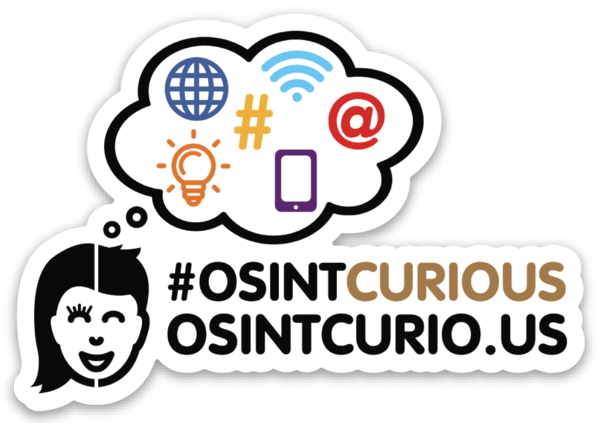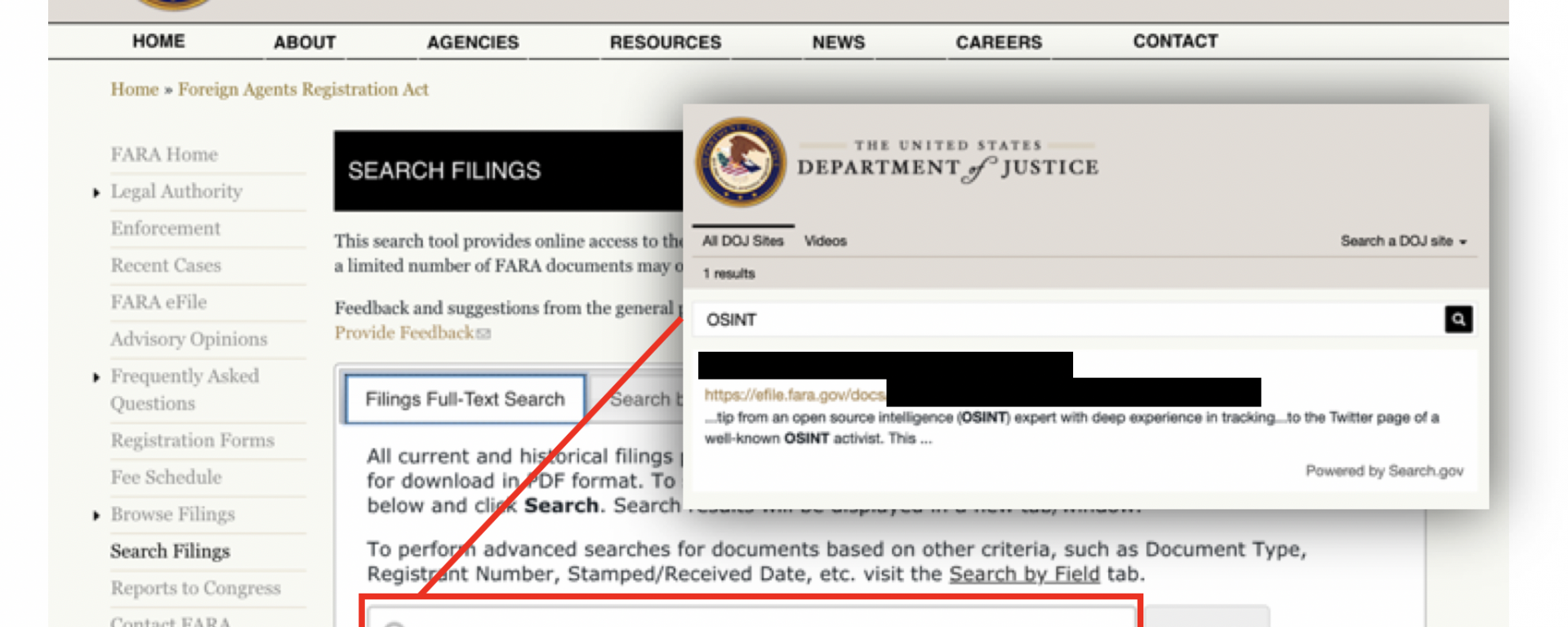Guest blog by Amine G.
As an OSINT professional, researching US-based entities (individual and otherwise) is both a curse and a blessing. It is a curse because the US public records landscape is undoubtedly one of the most fragmented given that rules governing their disclosure are hyper-localized — varying from State to State and County to County. A blessing because if an entity – short of taking extra-ordinary measures to mask its footprint (or can afford the likes of Michael Bazzell) – it is almost guaranteed that it had left breadcrumbs all over the public records landscape for you, committed OSINT professional, to find!
There can also be plenty of information on foreign entities with zero US physical operations but which sought to engage with US Government officials directly or indirectly through third parties such as lobbyists. A foreign entity can be a government authority, an NGO or political party, a corporation, or simply a non-US-person seeking to engage with official US institutions. Thankfully, these interactions are governed by US laws such as the US Foreign Agent Registration Act or FARA requiring that the foreign parties, and entities acting on their behalf, report to the US Department of Justice (DOJ) on a regular basis their activities engaging with US institutions and representatives.
Under FARA, foreign entities and their representatives are required to report not only on their physical meetings with US officials, but also other types of interactions such as phone calls, text messages and email exchanges (I’m intrigued to see come next disclosure period all the references to Zoom/Skype meetings in these mandatory disclosures). Disclosures also tend to include names, addresses, contract details and topics of engagement as well as generated revenue (linked to the specific lobbying activity) and expenses incurred while performing tasks on behalf of the foreign client. Needless to say, this can be a gold mine for OSINT researchers seeking to map out the US footprint of foreign entities.
FARA.gov
Link: https://fara.gov or https://justice.gov/nsd-fara
DOJ has conveniently made all of these disclosures available and searchable at FARA.gov. Once on the website, you can search its database in two ways: 1) Browse Filings and 2) Search Filings. The former is more a structured view of the underlying data organized by the lobbying entity(usually the lobbying firm), the registered individual lobbyist by name ,and the registered foreign entity.
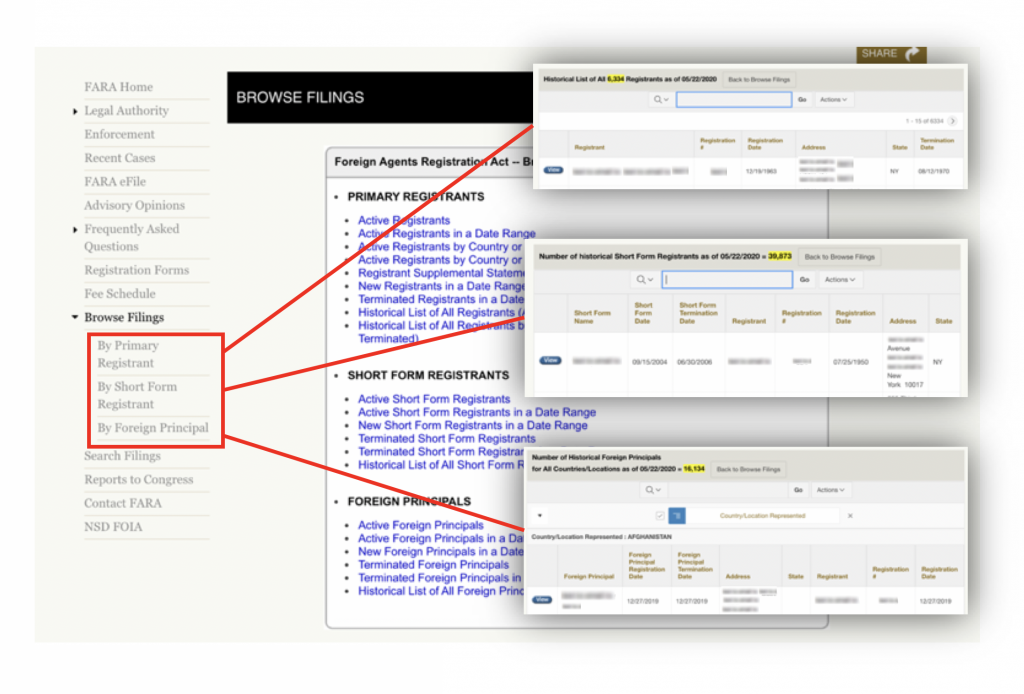
The “Search Filings” tab, however, provides a less structured access to the underlying data through keyword-based searches. This, although not supporting Boolean-based taxonomy, could sometimes yield some gold nuggets through wild-card searches.
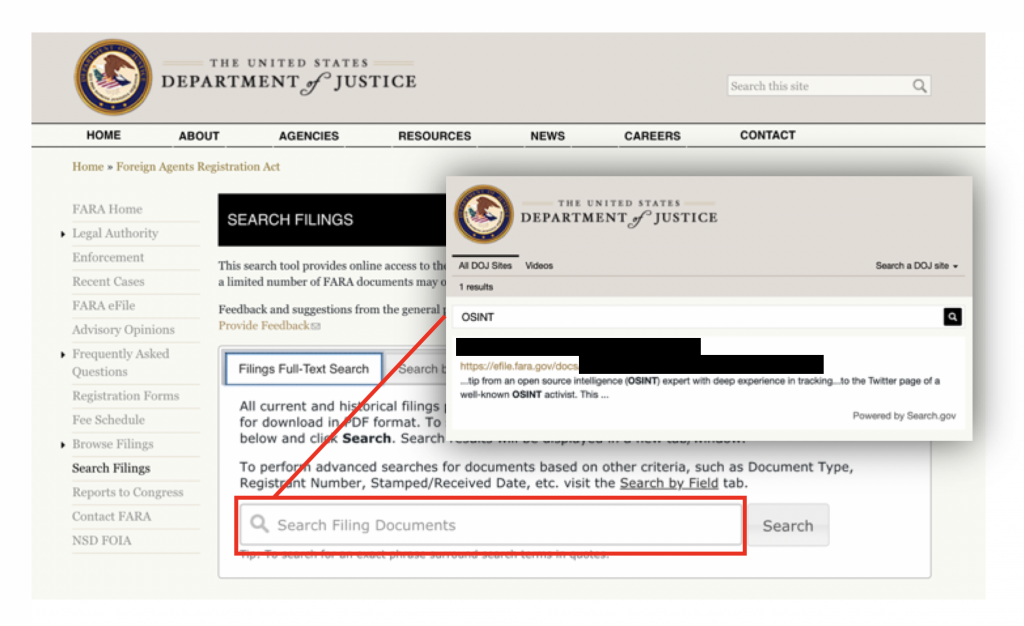
This can partially be resolved using a combination of operators on Google, namely “site:fara.gov” and the date-related operators (“before:YYYY-MM-DD” or “after:YYYY-MM-DD”).

Opensecrets.org
Link: https://opensecrets.org
FARA.gov aside, there is a number of free third-party websites that do a great job of providing a more in-depth and analytical look into foreign lobbying disclosures. One of these resources is Opensecrets.org, which provides one of the most comprehensive access to everything lobbying (both by domestic and foreign entities) and campaign financing. Maintained by the non-profit Center for Responsive Politics, OpenSecrets.org is effectively a clearinghouse for analysis on the intersection of money and politics.
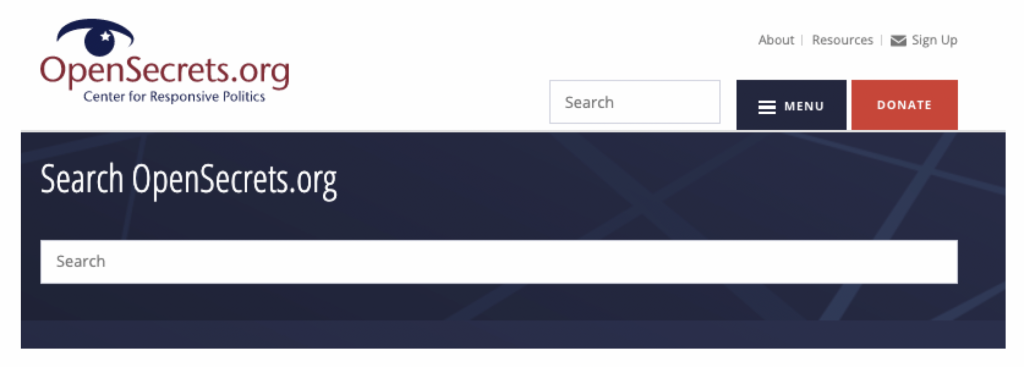
Opensecrets.org’s Foreign Lobby Watch (we’ll call it FLW) section is exclusively dedicated to FARA filings, presenting its underlying data in a searchable, user-friendly and visual format. FLW’s search tab returns quasi-identical results as FARA.gov with one small but notable difference: it allows for their sorting by date. This can be consequential when dealing with high-frequency keywords or when searching for the latest reference to a specific name or issue. The results usually include a text blurb copied verbatim from the original FARA filing. Once clicked, the original filing is fetched directly from FARA.gov in a PDF format.
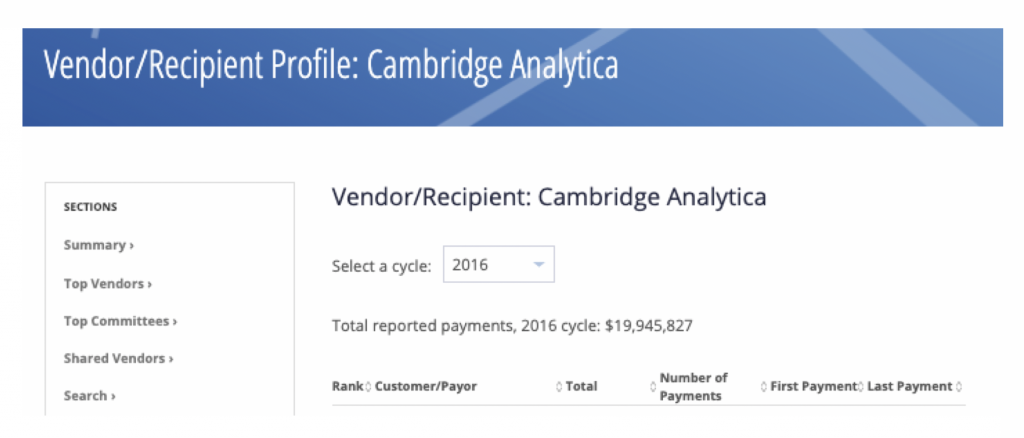
Lobbying Disclosure Act Database
Link: https://soprweb.senate.gov/index.cfm?event=selectfields
Another place to search for lobbying data is the US Senate’s Lobbying Disclosure Act Database (LDA). Like in the FARA case, you can search by client, lobbyist, or country, among other options. However, I sometimes find it most useful to search by “lobbying issue”, especially when the search relates to a specific industry, a current issue, a foreign entity with a known priority issue.
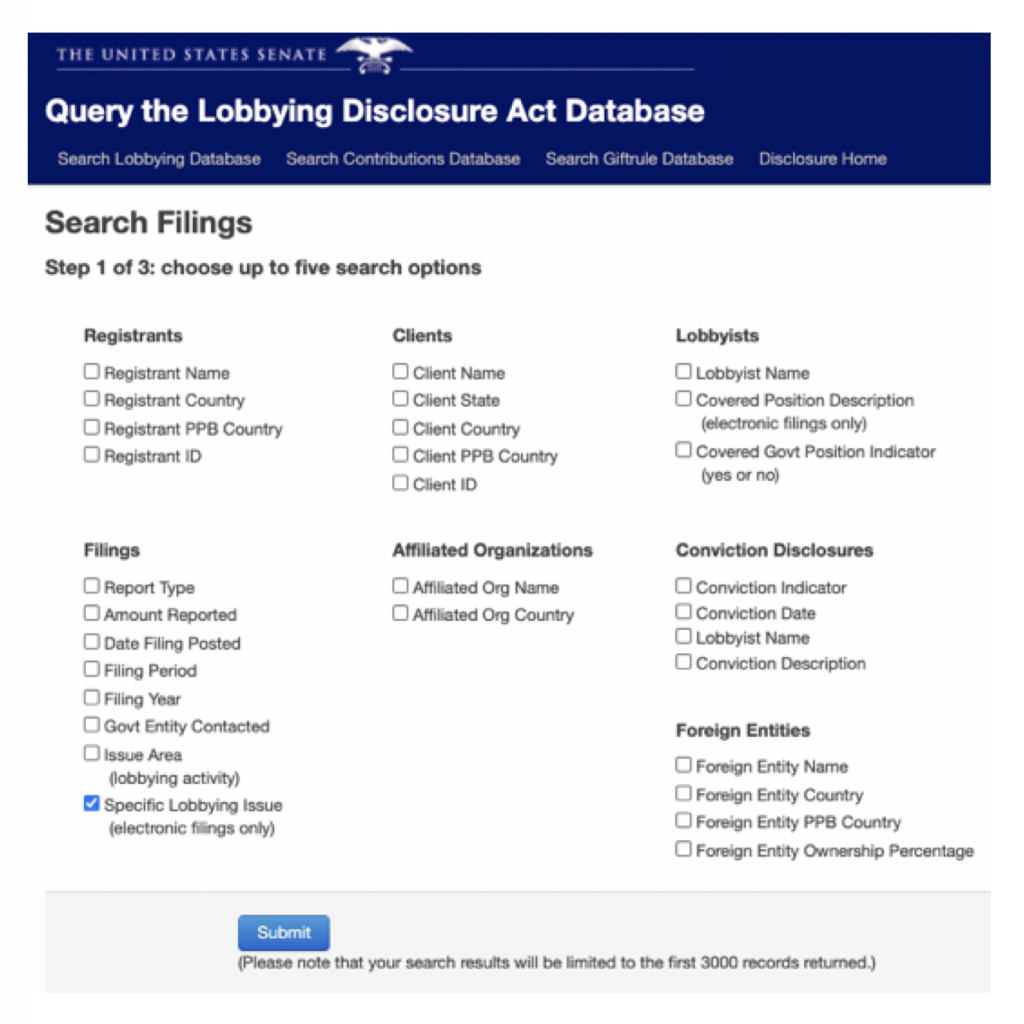
Much of the LDA data as well is searchable on Google using the same “site:” (site:soprweb.senate.gov) and date operators.
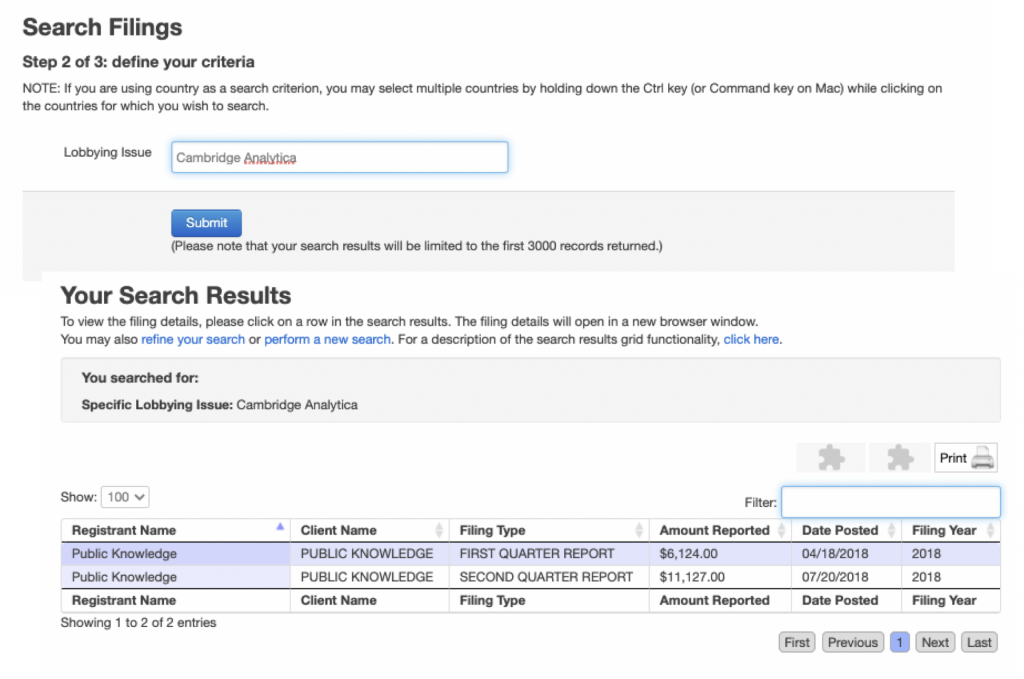

Candid.org
Link: https://candid.org
I sometimes like to combine lobbying related searches with a more in-depth look into the finances of US-registered non-profits. Such searches sometimes yield unexpected or undisclosed connections between foreign entities and US-based non-profits.
All US tax-exempt non-profits are required to file certain forms with the IRS. These filings, while also accessible directly through the IRS websites, are also searchable on third-party websites such as Candid.org. However, you do need to have a specific foundation/NGO in mind since there are no publicly accessible databases so far that provide for full document text search. With that said, these filings are detailed and can help pixelize the picture on the US dealings of certain foreign entities such as research universities, think tanks and the like.
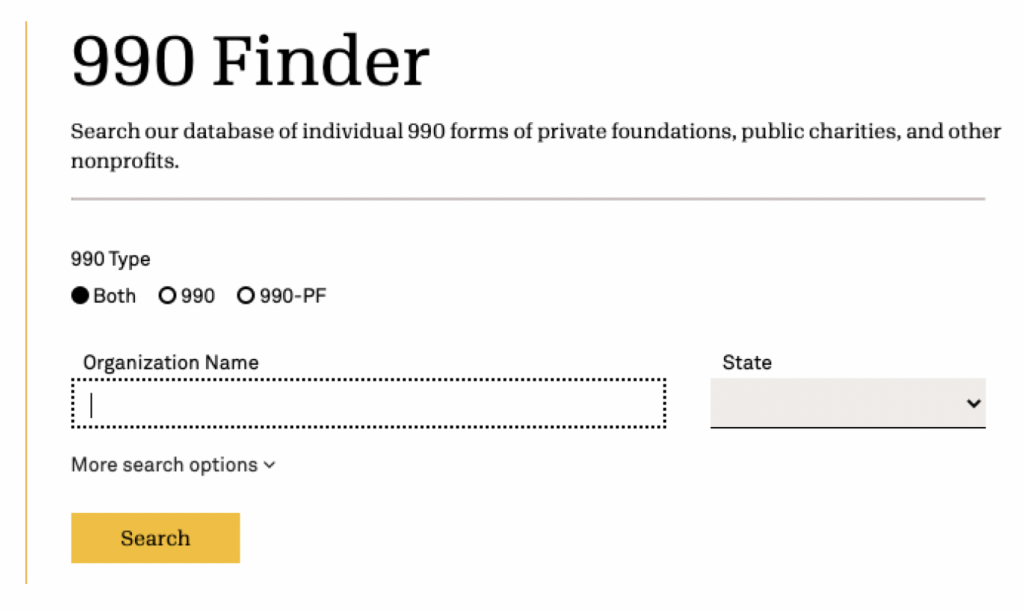

The above resources are meant to help researchers map out the US footprint of foreign entities engaged in lobbying activities in the US. Each of the resources provide do a lot more than what I have described here – so I’d encourage you to spend some time playing with them. Used individually or in tandem, they can sometimes yield surprising results on otherwise unknown dealings and networks.
